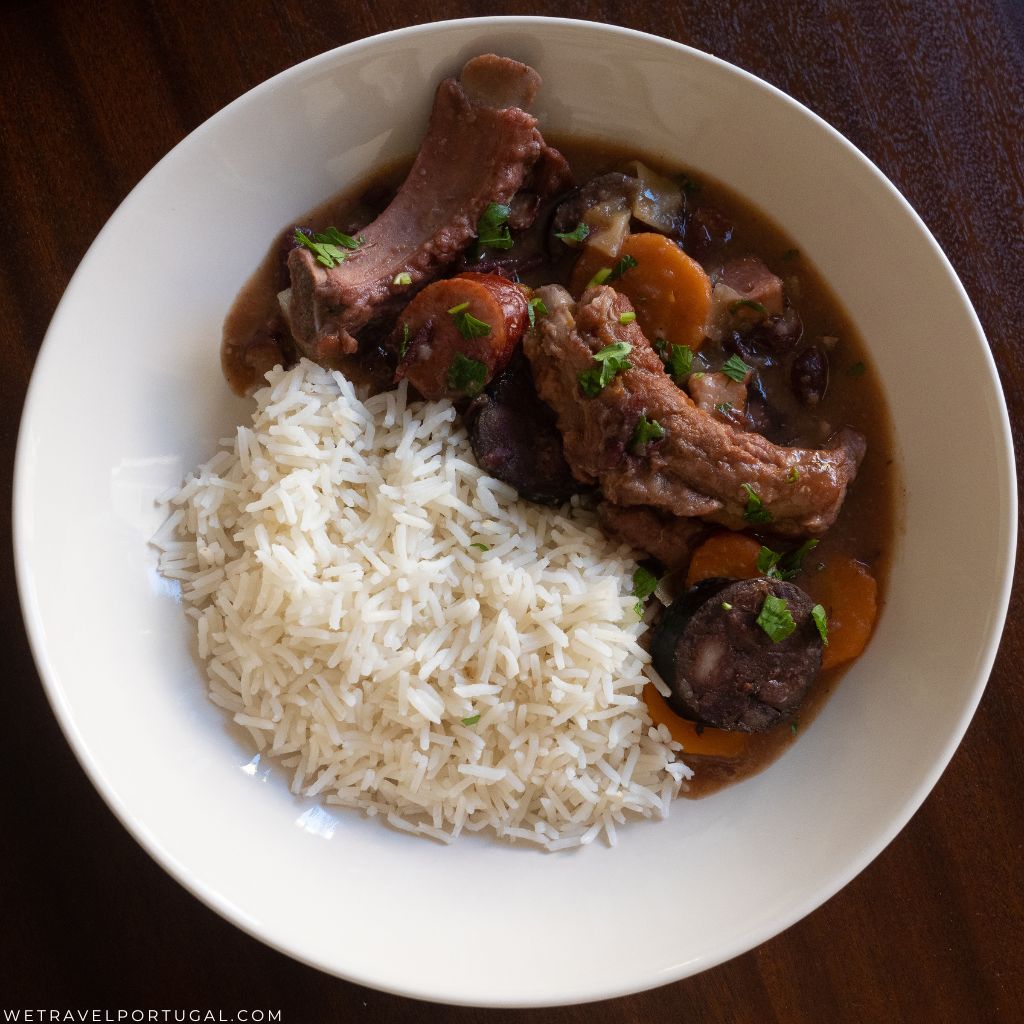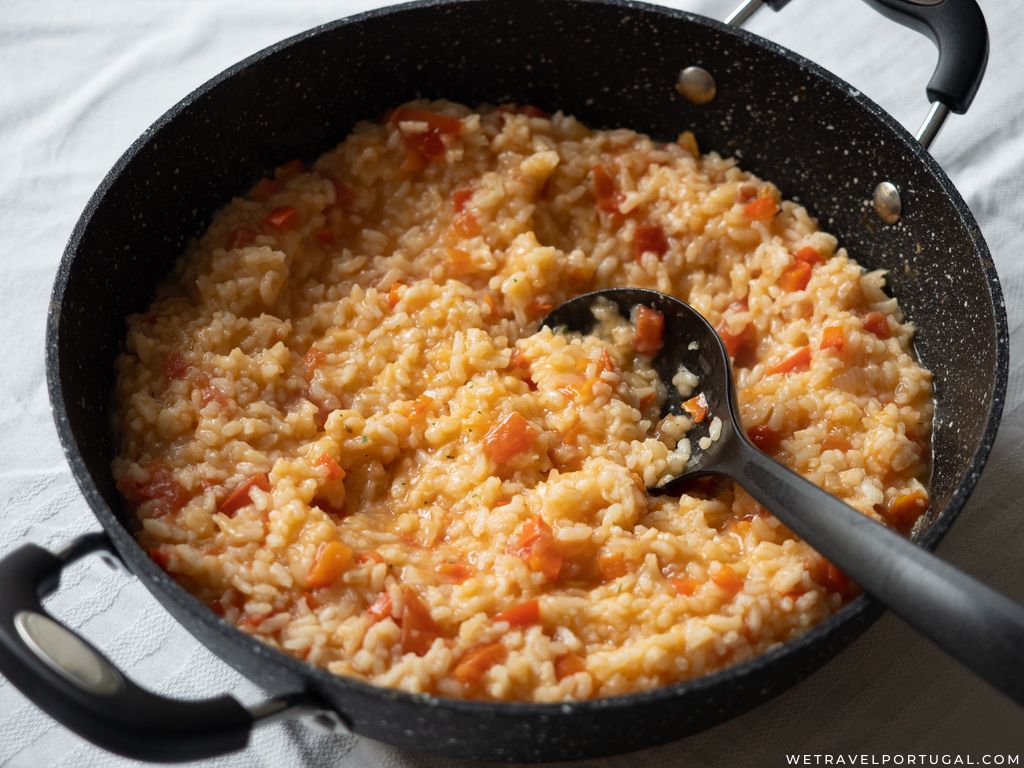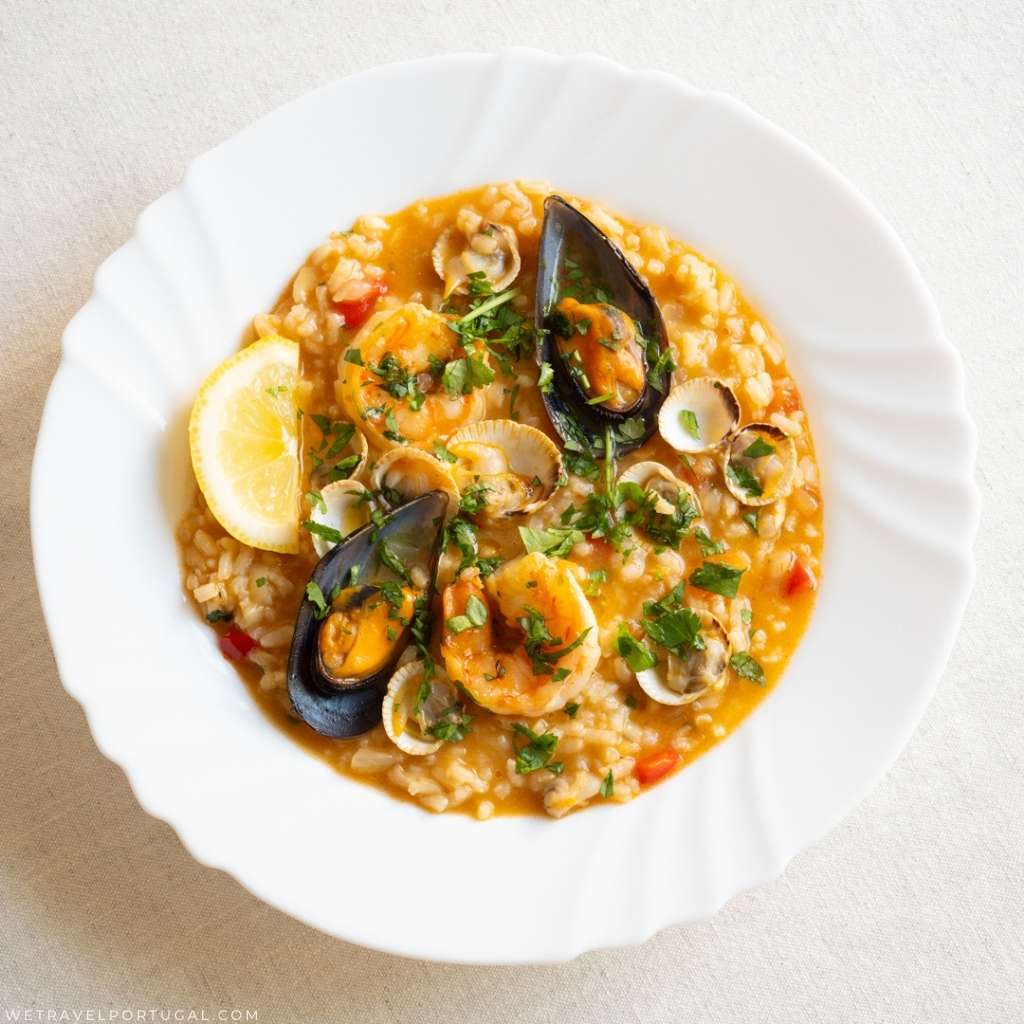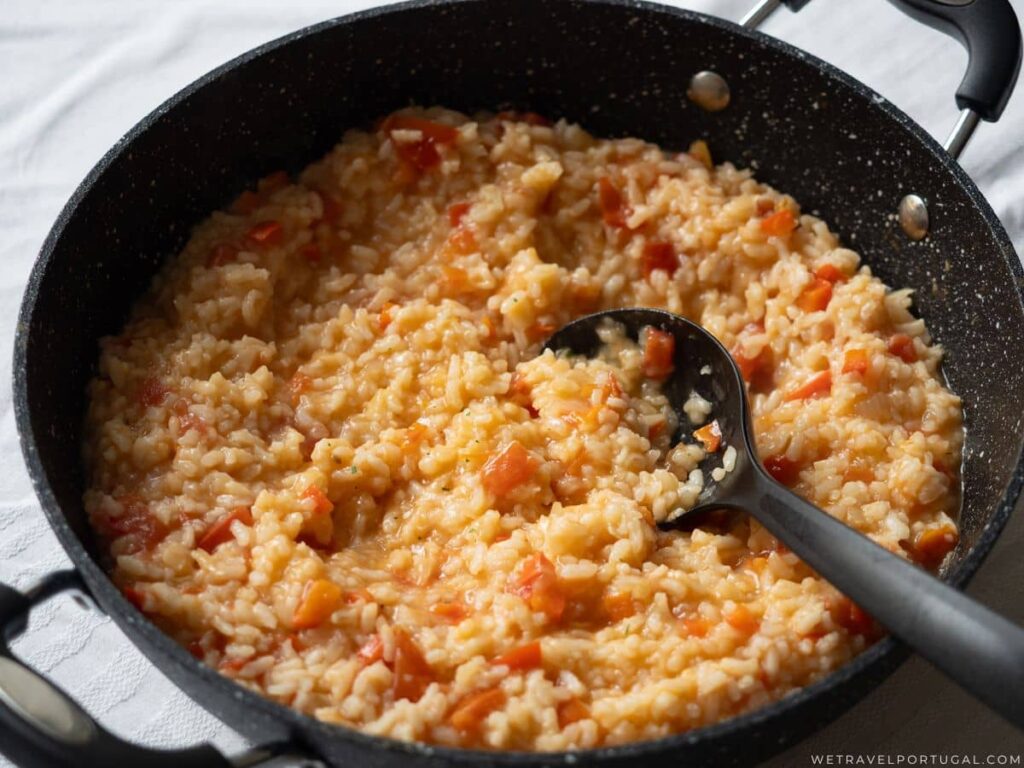Those who aren’t familiar with Portuguese cuisine often find it surprising how many rice dishes there are within the country’s gastronomy. In Portugal, rice often abandons the position of a side dish to become the star of the it, joining a variety of ingredients, seafood, cured meats, and even the classic egg yolks and sugar of the Portuguese pastelaria.
Many of these dishes use a homegrown variety called Arroz Carolino whose high starch content makes it perfect for creamier dishes or how the Portuguese would casually say, arroz malandrinho.In fact, rice is that much of a staple in Portugal, that the country occupies the top of the ranking of consumption in Europe. With an average of 16kg of rice per capita per year! So, trust us, they know what they are doing, and once you try arroz in Portugal, you will never think of rice as bland anymore!
A Brief History of Rice in Portugal
While rice was brought to Europe by Alexander the Great’s soldiers returning from Asia. It was the Moors who introduced Asiatic rice to what is now Portugal, between the 7th-8th centuries when they conquered the Iberian Peninsula. Asiatic rice, opposed to African rice, refers to the species Oryza Sativa L, commonly refer to as ‘rice’ in English. In Portuguese, it’s called arroz, which is believed to have derived from al roz, from Andalusi Arabic.
Although rice was already part of Portuguese culture since at least the 8th century, the first written accounts of the cereal only started to appear around the 12th and 13th centuries, during the reign of Denis of Portugal. Back then it was considered, almost exclusively, an ingredient of the elites. Portugal also had an important role in the global spread of rice by taking Asiatic rice to the west coast of Africa sometime in the 16th century.

Rice Production in Portugal
When it comes to rice farming in Portugal, the first official records can be traced to the 18th century, although it’s known that small scale production was not novelty, particularly in the south of the country with strong Moorish influence. The kingdom of Joseph of Portugal is often credited for expanding rice production, providing flooded lands near the major estuaries in the central and southern regions so rice could be farmed. The Mediterranean climate being one of the reasons why the crops flourished in the country.
Unfortunately, this would not be the glory days of rice in Portugal, the rice fields turned into breeding ground for insects. Rice crops were associated with high incidence of malaria. Among protests by the locals, new legislation restricting production were implemented lasting for several decades.
Rice Regains Popularity
Eventually, in the early 20th century, it was understood that the single transmitters of malaria were the mosquitoes of the genus Anopheles. This scientific discovery debunked the idea of rice fields being a direct cause of the disease, and pointed to the more prevalent stagnant waters of marsh lands of which rice production occurred. This would set the whole industry on a different course, causing the state to create an incentive plan for rice farming in 1916. Which included, among other things, the introduction of new rice varieties, tax benefits for those employing running waters, and even cash prizes for farmers contributing to the perfecting of farming techniques.

Rice in Modern Times
By the 1930s, rice was already considered a staple food in Portugal, with 1937’s production surpassing consumption. At present times, Portugal is the European country with the highest consumption of rice, with an average of 16kg per capita per year. Production happens mainly on the basins of the rivers Mondego, Sado, and Tejo, but also sparsely in the Algarve too. With rice fields together amounting to a total of 28.000 acres of land.
What kind of Rice can You Find in Portugal?
Currently the varieties of rice produced in Portugal all derived from Oryza Sativa L and can be divided into two subspecies: Japonica and Indica. In short, Japonica rice are the Portuguese Carolino rice varieties, which are rounder and stickier. And Indica, are Agulha rice varieties, which are longer and thinner, and usually remains looser after it’s cooked. That said, the most common rice varieties available in Portugal, which are the ones used in day-to-day Portuguese cooking, come from the types Carolino and Agulha.
However, every supermarket and grocery stores have a wide selection of rice available, catering to many different cuisines and recipes. Some of the common varieties you will find are basmati, Thai jasmine rice, sushi rice, risotto rice, brown and black rice. And as well ‘arroz vaporizado’ which is also used in some Portuguese dishes.

The Most Used Varieties in the Portuguese Cuisine
Arroz Agulha, which translates as ‘needle rice’, is a long grain variety of rice that’s very easy to prepare and remains loose once cooked. It’s your classic white rice that’s usually eaten as side dish, and the number one rice consumed in Portugal. It’s also what you will get with a meat or fish dish if you ask for rice on the side. It’s not the best rice if you want the grain to absorb different flavours.
Arroz Carolino is a homegrown Portuguese variety, and the second most consumed rice in the country. It’s a short grain rice with high starch content that’s really good at absorbing the flavour of other ingredients. It works wonders with creamier dishes, and it’s the rice used in many classic rice dishes such as Arroz de Marisco and Arroz de Tomate. Currently two types of Carolino rice hold the Protected Geographical Indication (PGI) label – Arroz Carolino do Baixo Montego IGP and Arroz Carolino das Lezírias Ribatejanas IGP.
Arroz Vaporizado is the same as parboiled rice, a rice type that’s been partially boiled in its husk. The process involves soaking, steaming, and drying the rice, which gains a slightly golden colour in the end. It’s considered more nutritious than white rice, and similarly to the agulha variety is often consumed as side dish, although it can also be used in the Portuguese Duck Rice.

9 Rice Dishes you Need to Try in Portugal
With an introduction to the wonderful Portuguese varieties of rice out the way, how about finding out the best dishes and ways to cook that rice! Read on to find out our favourite Portuguese rice dishes!
Arroz de Tomate – Portuguese Tomato Rice
Lets start with one of the most basic but also delicious rices available in Portuguese cuisine – Tomato Rice. If you ever wondered what Portuguese comfort food looks like, Arroz de Tomate is for you! It’s a simple Carolino rice, this time cooked in a sauce made with very ripe tomatoes, onions, garlic, peppers and fresh herbs. Due to its delicate flavour, it’s usually eaten as a side dish alongside some Shrimp Rissoles or Cod Fritters. It’s simple, creamy comfort food and a staple across lots of plates in Portugal.

Arroz de Marisco – Portuguese Seafood Rice
From the simple, to one of the most luxurious dishes. Arroz de Marisco is Portugal’s supreme seafood rice. Arroz de Marisco combines an assortment of shellfish and the classic Portuguese staples: peppers, onions, white wine, fresh herbs, and of course Carolino rice.
This lush dish is a Portuguese summer holiday must, that’s served in every seafood restaurant and marisqueiras. If you need extra convincing, Arroz de Marisco was considered one of the Seven Wonders of the Portuguese Gastronomy in 2011!

Arroz de Polvo – Octopus Rice
As well as general seafood rice dishes, you’ll find many that are specialized to just one or two types of seafood. A perfect example is Arroz de Polvo or Octopus Rice. It comprises Carolino rice, tender octopus meat, onions, garlic, white wine, and a mix of fresh herbs and spices. These classic Portuguese ingredients are all cooked in a rich octopus broth resulting in a rice that’s super creamy and packed with seafood flavours. It’s a must try at any seafood or coastal restaurant.

Arroz de Lingueirão – Portuguese Razor Clam Rice
Arroz de Lingueirão is a type of seafood rice that uses lingueirão – the elongated clams colloquially known as razor clams. Very traditional in the Portuguese cuisine, it comprises short grain rice, razor clams, tomatoes, peppers, onions, and fresh herbs. It’s the perfect option for the hot summer days in the Algarve, which happens to be the place where you will find the freshest, and according to some people, the best Atlantic razor clams!

Arroz de Tamboril – Portuguese Monkfish Rice
Another Portuguese rice dish that can’t be missed by those visiting Portugal is Arroz de Tamboril! Although the basic ingredients are the same you will see across the Portuguese traditional cuisine, this dish is unlike any other! That’s because it uses monkfish (tamboril) which has a delicate, lobster-like meat, which is the perfect match for the delicate flavour of the Carolino rice. Unfortunately, both the fish and the dish are not as widespread as other rice dishes. And perhaps you will have to resort to higher end fish restaurants to sample it.

Arroz de Bacalhau – Portuguese Salt Cod Rice
For those who want to have a taste of the traditional salt cod, but don’t want to commit to a big piece of the fish, Arroz de Bacalhau has got you covered! Believed to be created to use the less noble parts of the fish, and leftovers. It comprises shredded salt cod with tomatoes, onions, garlic, short grain rice, and classic Portuguese fresh herbs. Next time you see it in the menu of your local pastelaria, don’t skip it!

Arroz de Pato – Portuguese Duck Rice
Arroz de Pato is a traditional dish from the city of Braga, in the Northern region of the country. In this Portuguese classic, slow-cooked duck meat is combined with white rice, chorizo, and port wine to create a rich dish that’s delicious and perfect for the low temperatures of Northern Portugal.

Arroz de Feijão – Portuguese Rice with Beans
Arroz de Feijão, which simply means ‘bean rice’ or ‘rice with beans’ is a traditional Portuguese side dish. It’s a creamy rice, or how the Portuguese would say maladrinho, that combines some of the most traditional ingredients in the Portuguese cuisine.

Arroz-Doce – Portuguese Rice Pudding
The world-famous rice pudding also made it to our list of Portuguese rice dishes you need to try. Locally known as Arroz Doce, which simply means ‘sweet rice’, in Portugal it gained a special twist, the classic egg yolks of the Doçaria Conventual – An array of pastries and sweets created in the monasteries and convents.
Short grain rice is cooked in a mixture of milk, lemon peel, cinnamon, vanilla, and sugar. The egg yolks are then added once the rice if fully cooked, adding a light-yellow colour to the arroz doce, and creating this indulgent custard. It’s very easy to find in Portugal, from your humble pastelarias to the fancier restaurants.

What are your favourite Portuguese rice dishes? Is there another dish you believe we should include? Let us know in the comments!
More on Portuguese Food and Drink:
- The Best Portuguese Food – Exploring Portugal’s Cuisine
- The Seven Wonders of Portuguese Gastronomy
- Portuguese Drinks – 12 Drinks From Portugal Need to Try
Follow Us!

